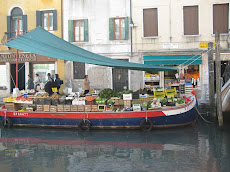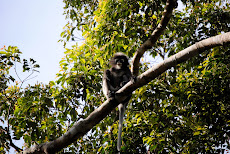Can you be sickened any more by the us role in Syria? how many sides has the us government supplied? how much must the syrian people pay for our recklessness?
how many us troops are shooting at each other in syria?
how many us troops are shooting at each other in syria?
Below is verbatim from the March 27 Los Angeles times: read it and weep.
Syrian militias
armed by different parts of the U.S. war machine have begun to fight each other
on the plains between the besieged city of Aleppo and the Turkish border,
highlighting how little control U.S. intelligence officers and military
planners have over the groups they have financed and trained in the bitter
five-year-old civil war.
The
fighting has intensified over the last two months, as CIA-armed
units and Pentagon-armed ones have repeatedly shot at each other while
maneuvering through contested territory on the northern outskirts of Aleppo,
U.S. officials and rebel leaders have confirmed.
In mid-February, a CIA-armed militia called Fursan al Haq, or
Knights of Righteousness, was run out of the town of Marea, about 20 miles
north of Aleppo, by Pentagon-backed Syrian Democratic Forces moving in from
Kurdish-controlled areas to the east.
“Any faction that attacks us, regardless from
where it gets its support, we will fight it,” Maj. Fares Bayoush, a leader of
Fursan al Haq, said in an interview.
Rebel
fighters described similar clashes in the town of Azaz, a key transit point for
fighters and supplies between Aleppo and the Turkish border, and on March 3 in
the Aleppo neighborhood of Sheikh Maqsud.
The
attacks by one U.S.-backed group against another come amid continued heavy
fighting in Syria and illustrate the difficulty facing U.S. efforts to
coordinate among dozens of armed groups that are trying to overthrow the
government of President Bashar Assad, fight
the Islamic State militant
group and battle one another all at the same time.
“It
is an enormous challenge,” said Rep. Adam Schiff (D-Burbank),
the top Democrat on the House Intelligence Committee, who described the clashes
between U.S.-supported groups as “a fairly new phenomenon.”
“It
is part of the three-dimensional chess that is the Syrian battlefield,” he
said.
The
area in northern Syria around Aleppo, the country's second-largest city,
features not only a war between the Assad government and its opponents, but
also periodic battles against Islamic State militants, who control much of
eastern Syria and also some territory to the northwest of the city, and
long-standing tensions among the ethnic groups that inhabit the area, Arabs,
Kurds and Turkmen.
“This
is a complicated, multi-sided war where our options are severely limited,” said
a U.S. official, who wasn't authorized to speak publicly on the matter. “We
know we need a partner on the ground. We can't defeat ISIL without that part of
the equation, so we keep trying to forge those relationships.”
ISIL
is an acronym for Islamic State. President Obama this month authorized a new
Pentagon plan to train and arm Syrian rebel fighters, relaunching a program
that was suspended in the fall after a string of embarrassing setbacks which
included recruits being ambushed and handing over much of their U.S.-issued
ammunition and trucks to an Al Qaeda affiliate.
Amid
the setbacks, the Pentagon late last year deployed about 50 special operations
forces to Kurdish-held areas in northeastern Syria to better coordinate with
local militias and help ensure U.S.-backed rebel groups aren't fighting one
another. But such skirmishes have become routine.
Last
year, the Pentagon helped create a new military coalition, the Syrian
Democratic Forces. The goal was to arm the group and prepare it to take
territory away from the Islamic State in eastern Syria and to provide
information for U.S. airstrikes.
The
group is dominated by Kurdish outfits known as People's Protection Units or
YPG. A few Arab units have joined the force in order to prevent it from looking
like an invading Kurdish army, and it has received air-drops of weapons and
supplies and assistance from U.S. Special Forces.
Gen.
Joseph Votel, now commander of U.S. Special Operations Command and the incoming
head of Central Command, said this month that about 80% of the fighters in the
Syrian Democratic Forces were Kurdish. The U.S. backing for a heavily Kurdish
armed force has been a point of tension with the Turkish government, which has
a long history of crushing Kurdish rebellions and doesn't want to see Kurdish
units control more of its southern border.
The
CIA, meanwhile, has its own operations center inside Turkey from which it has
been directing aid to rebel groups in Syria, providing them with TOW antitank
missiles from Saudi Arabian weapons stockpiles.
While
the Pentagon's actions are part of an overt effort by the U.S. and its allies
against Islamic State, the CIA's backing of militias is part of a separate
covert U.S. effort aimed at keeping pressure on the Assad government in hopes
of prodding the Syrian leader to the negotiating table.
At
first, the two different sets of fighters were primarily operating in widely
separated areas of Syria — the Pentagon-backed Syrian Democratic Forces in the
northeastern part of the country and the CIA-backed groups farther west. But
over the last several months, Russian airstrikes against anti-Assad fighters in
northwestern Syria have weakened them. That created an opening which allowed
the Kurdish-led groups to expand their zone of control to the outskirts of
Aleppo, bringing them into more frequent conflict with the CIA-backed outfits.
“Fighting
over territory in Aleppo demonstrates how difficult it is for the U.S. to
manage these really localized and in some cases entrenched conflicts,” said
Nicholas A. Heras, an expert on the Syrian civil war at the Center for a New
American Security, a think tank in Washington. “Preventing clashes is one of
the constant topics in the joint operations room with Turkey.”
Over
the course of the Syrian civil war, the town of Marea has been on the front
line of Islamic State's attempts to advance across Aleppo province toward the
rest of northern Syria.
On Feb. 18, the
Syrian Democratic Forces attacked the town. A fighter with the Suqour Al-Jabal
brigade, a group with links to the CIA, said intelligence officers of the
U.S.-led coalition fighting Islamic State know their group has clashed with the
Pentagon-trained militias.
“The
MOM knows we fight them,” he said, referring to the joint operations center in
southern Turkey, using an abbreviation for its name in Turkish, Musterek
Operasyon Merkezi. “We'll fight all who aim to divide Syria or harm its
people.” The fighter spoke on condition of anonymity.
Marea
is home to many of the original Islamist fighters who took up arms against
Assad during the Arab Spring in
2011. It has long been a crucial way station for supplies and fighters coming
from Turkey into Aleppo.
“Attempts
by Syrian Democratic Forces to take Marea was a great betrayal and was viewed
as a further example of a Kurdish conspiracy to force them from Arab and
Turkmen lands,” Heras said.
The
clashes brought the U.S. and Turkish officials to “loggerheads,” he added.
After diplomatic pressure from the U.S., the militia withdrew to the outskirts
of the town as a sign of good faith, he said.
But
continued fighting among different U.S.-backed groups may be inevitable,
experts on the region said.
“Once
they cross the border into Syria, you lose a substantial amount of control or
ability to control their actions,” Jeffrey White, a former Defense Intelligence
Agency official, said in a telephone interview. “You certainly have the
potential for it becoming a larger problem as people fight for territory and
control of the northern border area in Aleppo.”
Bulos
is a special correspondent.


















No comments:
Post a Comment